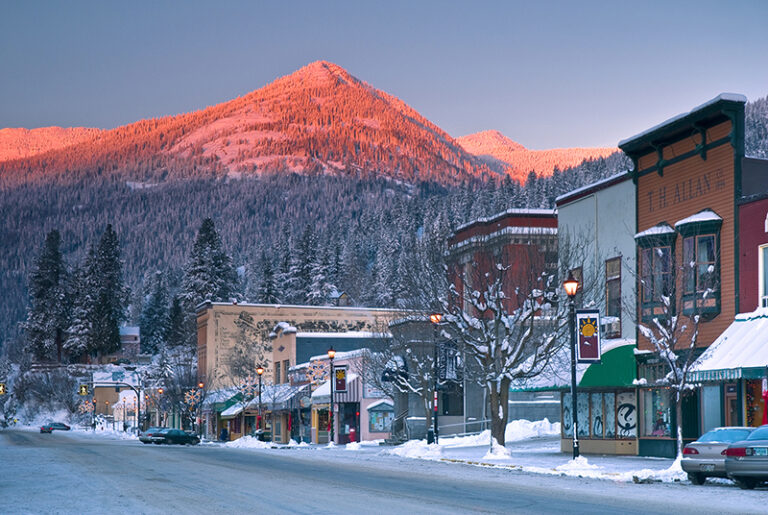Back in August 2007 did a story on pro-hemp Idaho Republican. Tom Trail champions hemp as a great economic development tool for our region. In today’s USA Today there is a great piece about to North Dakota farmers sueing the government to be able to grow hemp. Check the great Quotes from the Dr. Bronner’s Soap guy. If you never read our original article you can read it here.
A Pro-Hemp Republican
By Juliet Sinisterra
While the Midwest focusses on increased corn and soy production for biofuels, the Dead Zone in the Gulf of Mexico is getting bigger. Named for its lack of oxygen and abundance of nitrates, the Dead Zone is thick with algae. The United Nations warns that the world’s growing number of dead zones are a direct result of herbicide and pesticide-intensive farming practices. According to a recent report by BBC News, the volume of nutrients flowing down the Mississippi River into the Gulf has tripled over the last 50 years. Just this past year, farmers planted 15% more corn than the previous year to meet government-induced incentives for ethanol production.
Representative Tom Trail, Idaho House Representative from Moscow, sees industrial hemp as a potential answer. “We are the only country in the world that prohibits the growing of industrial hemp. Industrial hemp has so many positives about it. In today’s world of biodiesel and ethanol, the economists I have talked with at Purdue University indicate that biodiesel from hemp seed would be a realistic possibility,” says Trail.
Unlike, corn, industrial hemp, requires no pesticides or herbicides. Dense thick roots, growing 12 to 15 feet below the surface help with water infiltration and wipe out any weeds. Trail sees the plant as being an “excellent alternative crop” for farmers in the Inland Northwest. “Hemp helps in the rotation sequence to break up various types of viruses or blights that you might have with wheat or peas, lentils or barley. It is also terrific habitat for wild birds and game,” says Trail.
Trail first got interested in hemp while reading about Henry Ford. Ford utilized industrial hemp in the ‘20s. Hemp fiber was used to make various components for the early Model T s and A s such as the dashboards and molding. Ford also used hemp seed to make biodiesel.
“Hemps got quite an important economic history in the early development of the United States. Large plantation owners, like George Washington and Thomas Jefferson, grew industrial hemp. The state of Virginia back at the turn of the 1800s required payment of taxes in industrial hemp. Also, it is very likely that the first American flag was made of industrial hemp,” says Trail.
With uses ranging from textiles and paper, to edible oils and seeds, hemp appears to be dream crop for struggling U.S. farmers. So why is it still illegal to grow?
“Hemp, a cousin to marijuana contains only traces of THC—the drug-inducing substance. Someone once said that in order to get a kick out of smoking industrial hemp, you would have to roll a cigar the size of a telephone pole,” says Trail.
To date, 28 states in the U.S. have introduced hemp legislation and 15 have passed legislation; seven (Hawaii, Kentucky, Maine, Maryland, Montana, North Dakota and West Virginia) have removed barriers to its production or research. Trail has introduced hemp legislation three times in Idaho. Although, Trail found a wide variety of support among farmers, law enforcement in Idaho along with conservative lawmakers continually blocked his bill.
North Dakota, the first state to issue licences to grow hemp, now has two farmers embroiled in a lawsuit with the Drug Enforcement Agency (DEA) for a failure to process their licenses. Trail is closely watching this lawsuit.
“Unless we can change national regulations, the Department of Drug Enforcement is pretty well set, they have their rules down that prohibit the growing of industrial hemp. Now Dakota had thought they had an arrangement so that farmers there could grow industrial hemp, the State’s infrastructure was all set up for it, but apparently, Drug Enforcement in D.C. reneged,” says Trail.
Recreational use of cannabis in the United States began in the early 1900s and gained in popularity around the time of the prohibition. Trail points to the Marihuana Tax Act of 1937 as the most damaging piece of legislation against hemp. Here, all forms of cannabis were lumped together, including hemp used for textiles, fuel or medicine.
“Our basic problem today is that hemp has been continually demonized as marijuana, since the infamous Marihuana Tax of 1937,” says Trail. He alleges that Congress passed the act under the influence of DuPont in order to protect their emerging nylon and plastics industry. It is true that two of the bill’s main proponents, Harry J. Anslinger and William Randolph Hearst had economic interests opposed to hemp. Anslinger was the husband of Treasury Secretary, Andew W. Mellon’s niece. Mellon Bank was a primary funding source for DuPont. William Randolph Hearst, publishing magnate, was also a timber baron and paper mill owner.
Trail says that many places in Europe are now growing varieties of industrial hemp with zero THC. England, now has a burgeoning hemp industry, since overturning legislation in 1993 that had made the growing of hemp illegal. Sustainable industries, there, are researching ways to make hemp a viable alternative to cotton—a huge consumer of pesticides. Environmentalists working on behalf of hemp, in England, lament the thousands of trees cut down to make paper and the tremendous amounts of pesitcides used toward the cultivation of cotton—all of which could have been significantly reduced through hemp. According to an article in The Guardian from September of 2006, hemp is deemed as having almost half the “ecological footprint” of cotton by the Stockholm Institute.
Back in Idaho, Trail sees most of his opposition coming from local law enforcement. Trail says the most common argument that he hears is that if legalized, farmers could easily grow a small patch of marijuana within a larger field of hemp. Trail dismisses this fear as unfounded, “Law enforcement in Europe is using the growing of industrial hemp to control marijuana. Marijuana and industrial hemp cross-pollinate, so if you are a marijuana farmer, you don’t want to be within 15 miles of an industrial hemp field because cross-pollination lowers the potency of your crop by about 80%,” says Trail.
But Trail sees the the biggest hurdle to growing industrial hemp coming from federal level. Recently, an 8th U.S Circuit Court of Appeals sided with the DEA in a case against a Native American farmer in South Dakota. Thinking he was protected by tribal sovereignty, farmer, Alex White Plume proceeded with growing hemp in 2000 only to have his crop destroyed by DEA agents just prior to harvest. In its ruling the Court did recognize, “that the growing of hemp for industrial uses is the most viable agricultural commodity for that region,” but felt that, “these are policy arguments better suited for the congressional hearing room than the courtroom.”
Faced with a world in the midst of environmental crisis, dwindling energy sources, and struggling American farmers, hemp appears to be a no-brainer. Let’s see if the U.S. government is willing to listen.
“There is no question about the economic positives in raising industrial hemp. At this point, it really is an educational process to gain local and state support to put pressure on the President and Congress. It will take continual pressure from the States,” says Trail. //
To contact Representative Tom Trail please call (208) 882-6077 or go to www.legislature.idaho.gov.
For more information on hemp legislation throughout the United States, please visit www.votehemp.com














